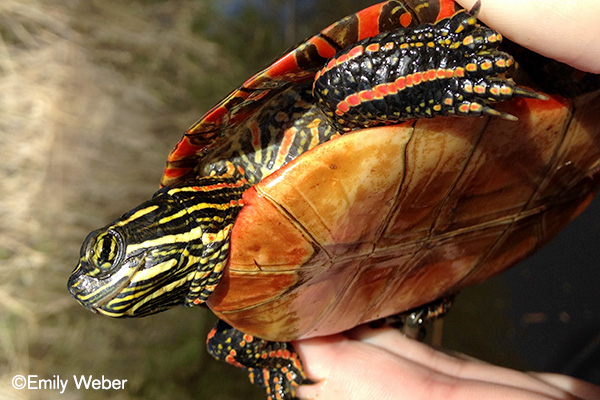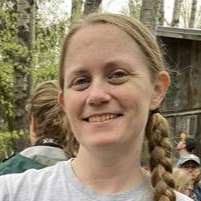Anurans & Turtles

Anurans
The “anurans” species group consists of seven frog and one toad species: American toad (Bufo americanus), American bullfrog (Lithobates catesbeianus), green frog (Lithobates clamitans), Cope’s gray treefrog (Hyla chrysoscelis), eastern gray treefrog (Hyla versicolor), northern leopard frog (Lithobates pipiens), spring peeper (Pseudacris crucifer) and wood frog (Lithobates sylvaticus). All 8 species have been documented recently in the LGBFR AOC by the Great Lakes Coastal Wetland Monitoring Program (CWMP, 2011-2017; Uzarski et al. 2017) and additional field surveys conducted for this project in 2015.
Little historical information about anurans in the LGBFR AOC has been formally summarized; however, because emergent marshes and other coastal habitats historically were much more widespread in lower Green Bay (Bosley 1978), overall abundance and diversity of anurans almost certainly have decreased significantly during the last century. Historical Brown County air photos (e.g., 1938 and 1960, Brown County Planning and Land Services, Official GIS Map of Brown County, WI) show extensive emergent/submergent marshes in the Duck Creek Delta, Dead Horse Bay/Longtail Point, Peters Marsh and along the western side of the Fox River by the De Pere Dam. The destruction and fragmentation of the coastal zone of lower Green Bay is already visible in 1938, and wetland destruction continued through 1960 and later air photos. The long-term Wisconsin Frog and Toad Survey began in 1981 in response to noticeable declines of species such as northern leopard frog and American bullfrog (Mossman et al. 1998).
It is well documented that anurans are highly sensitive to toxins and, if exposed in large amounts, can result in deformities and reproductive issues (Kersten 1997, Rosenshield et al. 1999, Qualls et al. 2013). Out of the eight anurans reported in the LGBFR AOC, American bullfrog and northern leopard frog are listed as state special concern species, though American bullfrog is also state ranked as “vulnerable” (S3).

Turtles
The original BUI removal targets for the LGBFR AOC proposed that reptiles (including snapping and painted turtles) should be sustained in “abundances sufficient to provide ecological function.” We observed few turtles of any kind during our field surveys, although of course the methods were not targeted toward this group. Nevertheless, this is a group that we suggest deserves increased attention.
Two widespread species, eastern snapping turtle (Chelydra serpentina) and painted turtle (Chrysemys picta), are by far the most common turtles in the LGBFR AOC. Additionally, Blanding’s turtle (Emydoidea blandingii), recently delisted as a Wisconsin threatened species, has been reported in Brown County (Wisconsin Herp Atlas Project 2007). Suitable habitat (Ross and Anderson 1990) occurs in coastal landscapes such as Point au Sable, Bay Beach Wildlife Sanctuary, Duck Creek Delta, Barkhausen Waterfowl Preserve and the Malchow/Olson Tract, where mosaics of ponds, forested swamps and wet meadows are located near the Green Bay shoreline (Joyal et al. 2001). Spiny softshell turtle (Apalone spinifera) has been verified in Brown County (Wisconsin Herp Atlas Project 2007), including in the lower Fox River in the 1980s (G. Casper, pers. comm.), and was found in the bay south of Point au Sable in 2015 (S. Beilke, pers. comm.). Wood turtle (Glyptemys insculpta), officially listed as threatened in Wisconsin, favors forested streams with nearby wet meadows (Compton et al. 2002). This species may not be present in the coastal zone of Green Bay but has been found in Duck Creek and Pensaukee (G. Casper, pers. comm.) and could potentially occur at other sites along the East River or Baird Creek.
Basking sites such as shoreline deadwood, sandbars or vegetation islands have been shown to be critical for thermoregulation in turtles (Boyer 1965). These habitats are generally missing from developed shorelines in the LGBFR AOC and should be an important element of proposed beach and shoreline restoration projects.

Ask an Expert
As a proud alumna of UW-Green Bay, Erin Giese understands the need to provide hands-on experiences for students. She's committed to training the next generation of scientists who help to improve the LGBFR AOC. If you have questions, she can help!